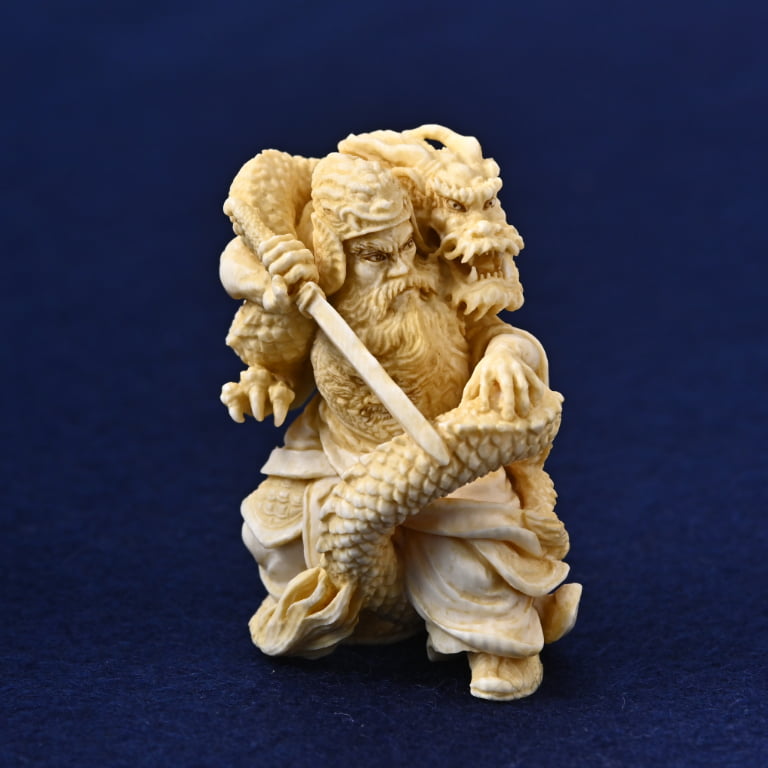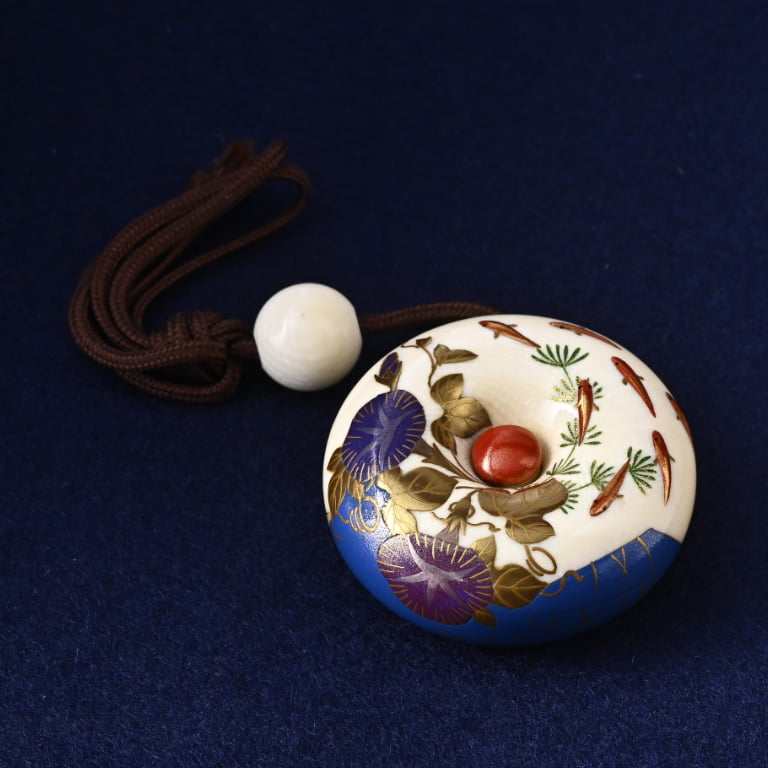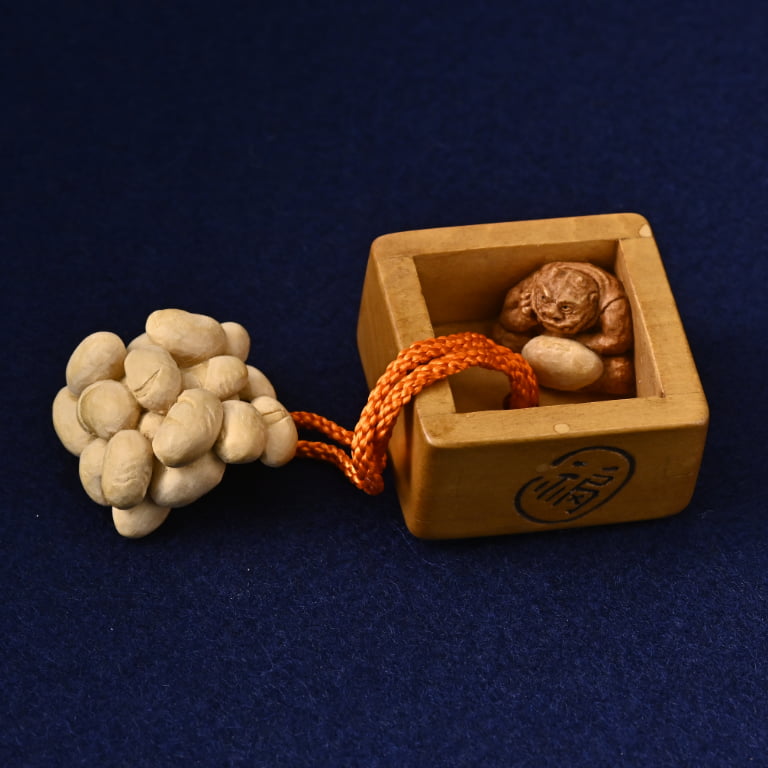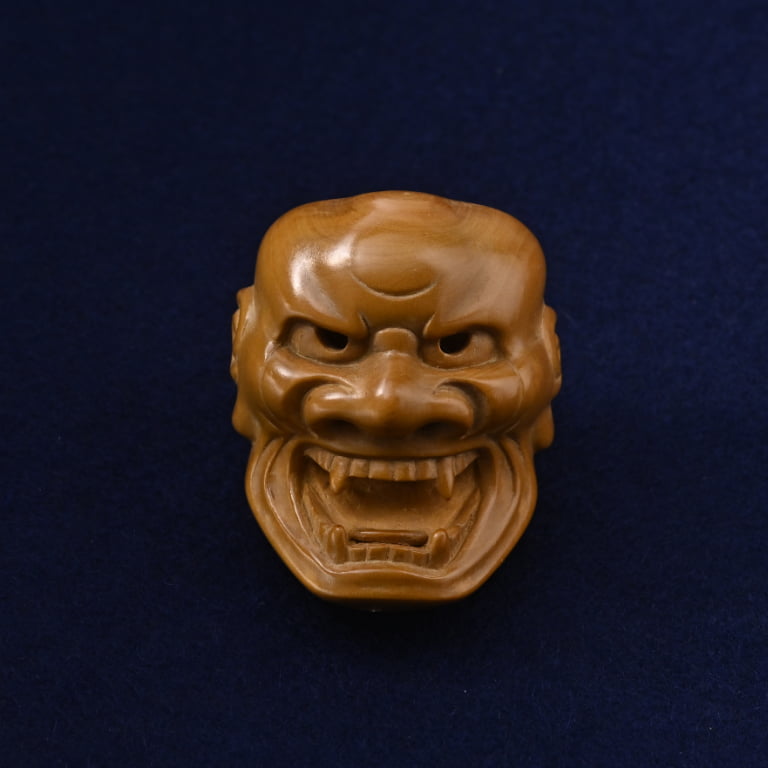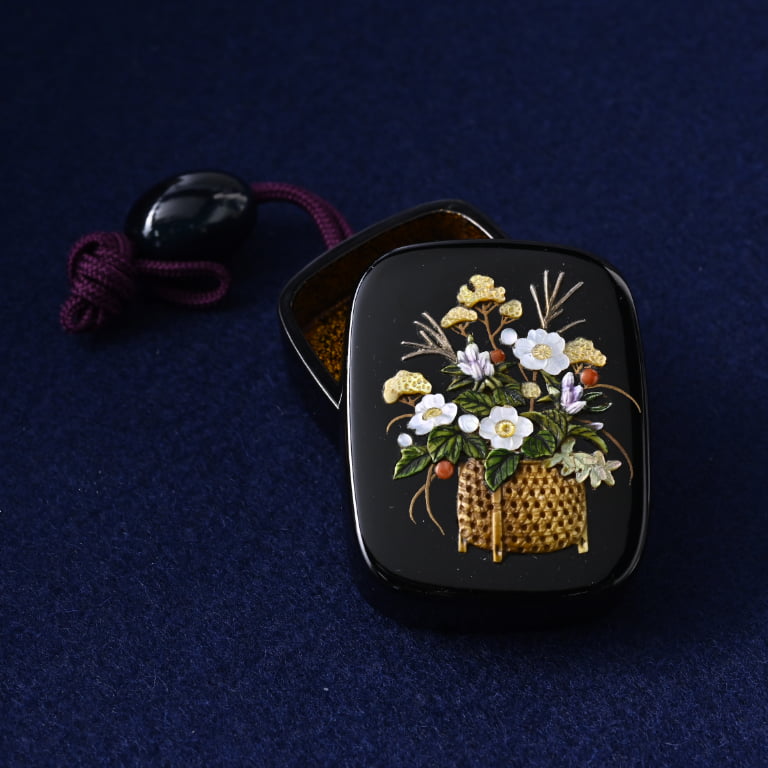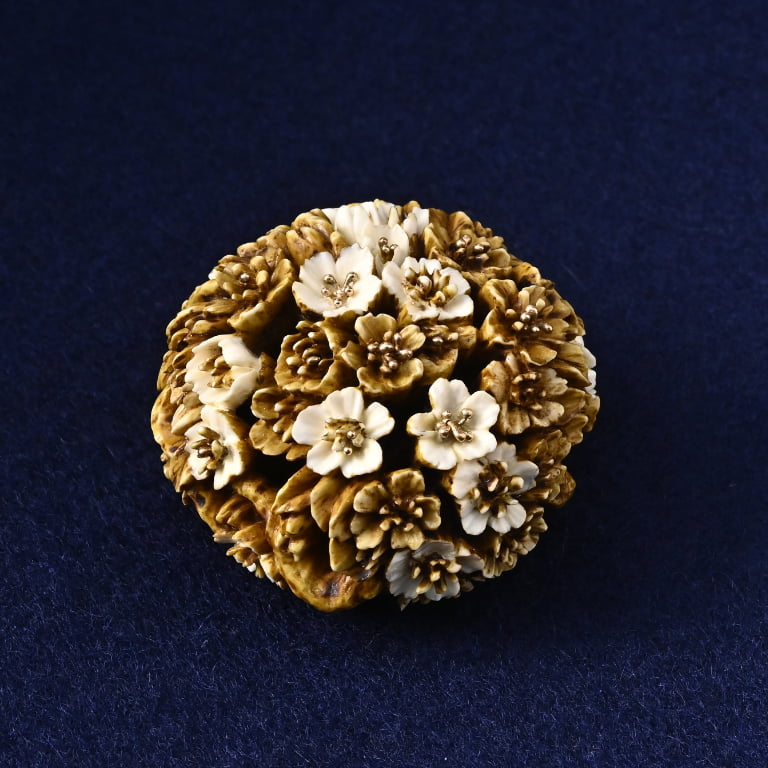
Learning Netsuke
Netsuke were developed during the Genroku period (1688-1704), when the popular culture in Kyoto was in full bloom, and spread to the common people as a fastening device for carrying commodities such as inro, cigarette cases and purses. Since then, designs and techniques were elaborated by the famous painters of the Kano school and various craftsmen, and netsuke were grown into a small art form unique to Japan. Even in the modern age, new and original netsuke are being created one after another.
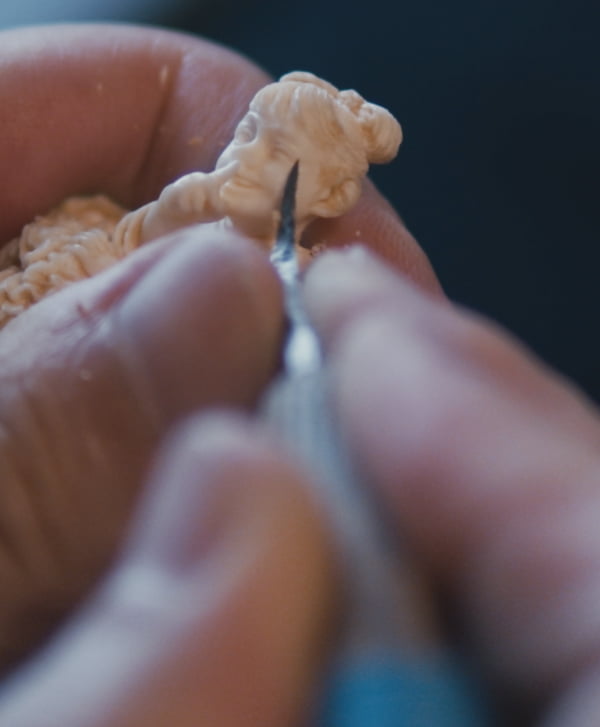
What Is Netsuke?
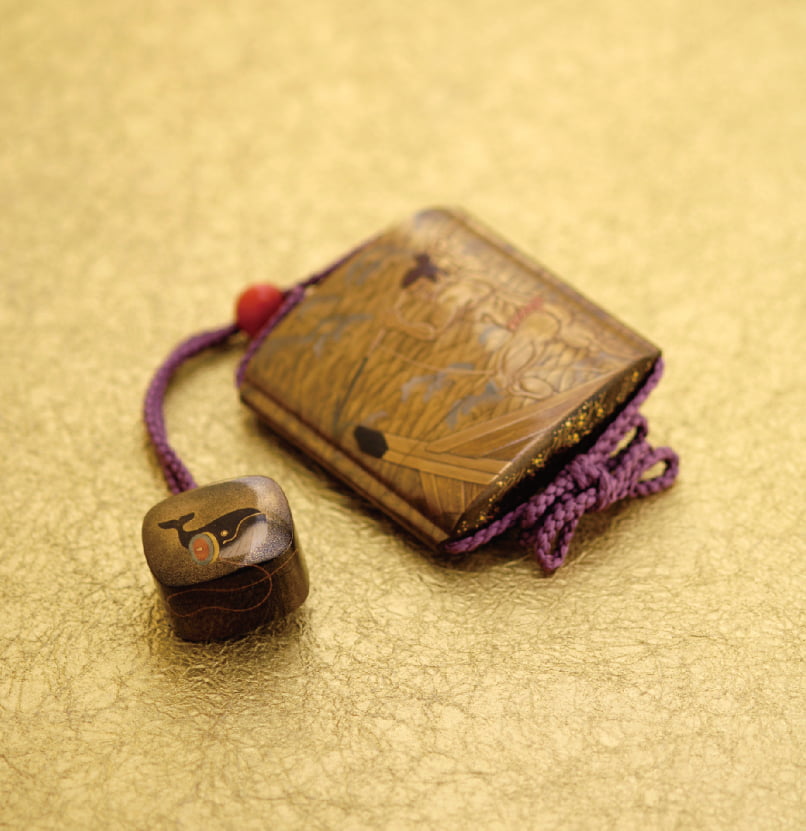
Netsuke is a fastener that is attached to an obi belt to prevent daily necessaries from falling. It has been developed throughout history as a tool that combines practicality and artistry.
Netsuke became an accessory to show off one’s good taste as well as a fastening device. Because netsuke was placed on an obi belt, it was developed as a craft art along with the deepening of kimono culture so that it would not be comparable to the designs of kimonos, obi belts and daily necessities. Netsuke lost its significance as a fastening device due to the change in lifestyles and the spread of Western clothing in the Meiji era. However, the artistry of netsuke was highly evaluated by Westerners who came to Japan, and many pieces were actively exported to Western countries, and ivory netsuke were produced to suit their tastes. Today, the field of creation has expanded to overseas, and netsuke are being created based upon various interpretations while conserving the traditional techniques.

Characteristic of Netsuke
A netsuke must be equipped with a function as a fastener. Not only that, but a netsuke has unique features that make it more than just a small sculpture.
Spirit of “Okashi”
The word "netsuke" first appeared in a document in 1671. The document says that they never get tired of looking at netsuke. It suggests that netsuke have fascinated viewers since that time due to the ingenuity of netsuke artists in design, composition and technique. These fascinating impacts are due to "intellectual discoveries emanating from curiosity" that can be frequently found in Japanese classical literature. The spirit of "Okashi" is still respected in modern Japan.
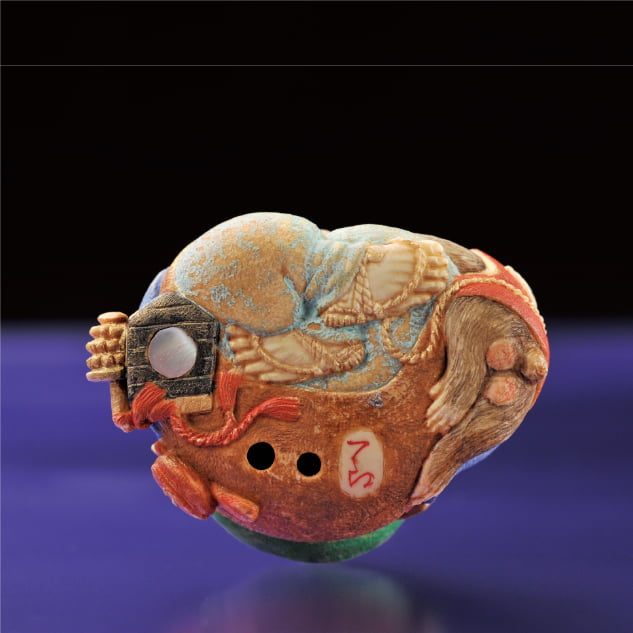
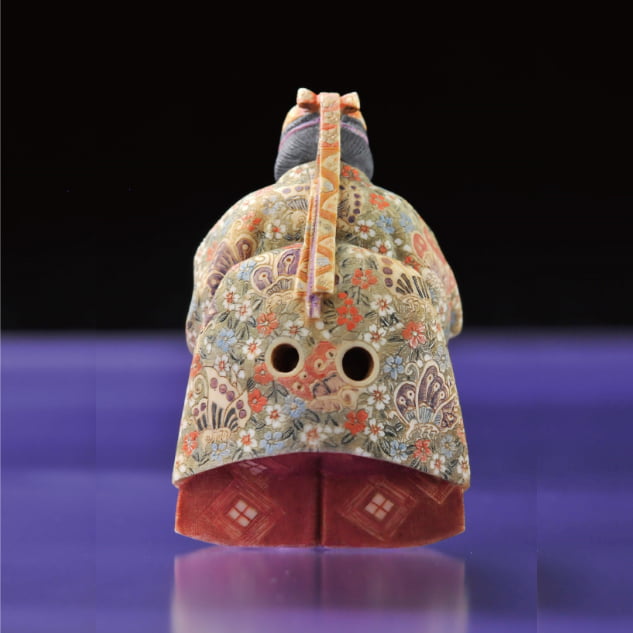
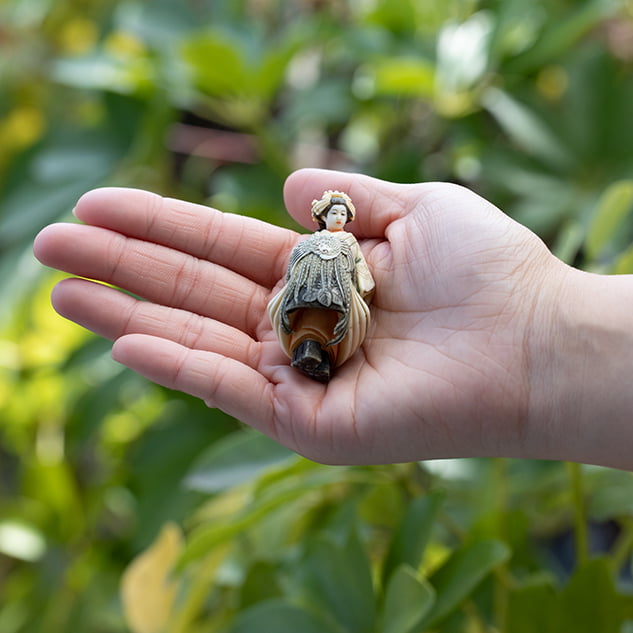
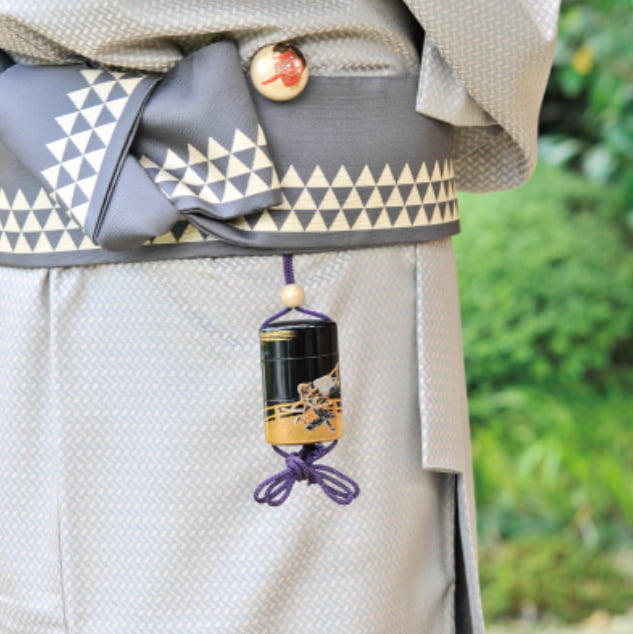

Classification of Netsuke
Netsuke are classified into the following types according to their shape.
-
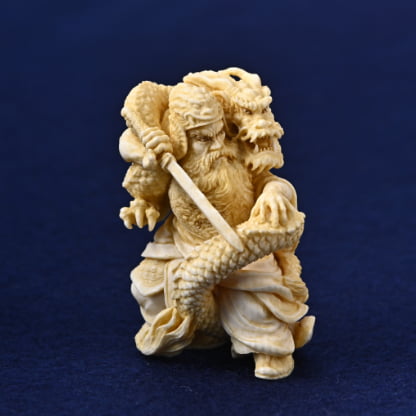 Katabori(Sculpture) Netsukehe most popular type of netsuke: Many of them have the motifs of persons or animals: Basically, they are carved on all sides.
Katabori(Sculpture) Netsukehe most popular type of netsuke: Many of them have the motifs of persons or animals: Basically, they are carved on all sides. -
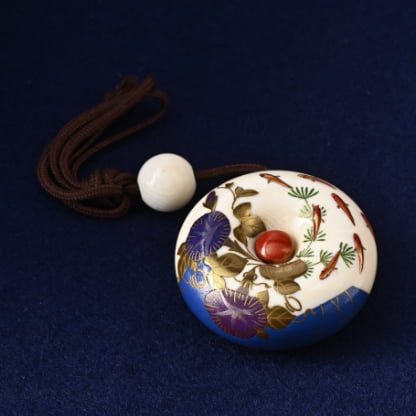 Manju NetsukeThick, flat and circular netsuke that literally look like manju, a steamed-bean-jam bun eaten as a snack: Generally, they are decorated with maki-e lacquer or embossed designs.
Manju NetsukeThick, flat and circular netsuke that literally look like manju, a steamed-bean-jam bun eaten as a snack: Generally, they are decorated with maki-e lacquer or embossed designs. -
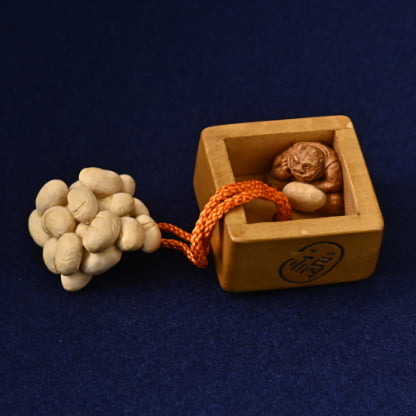 Kagamibuta (Mirror Lid) NetsukeA subtype of manju netsuke, with one side hollowed out and covered with a lid usually decorated with metalwork.
Kagamibuta (Mirror Lid) NetsukeA subtype of manju netsuke, with one side hollowed out and covered with a lid usually decorated with metalwork. -
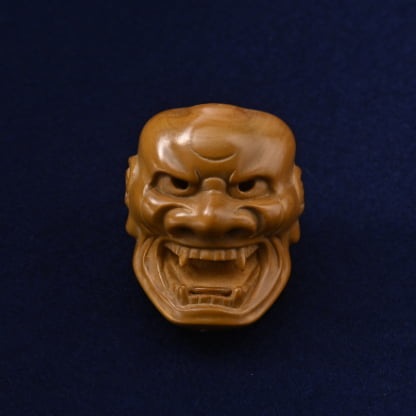 Men (Mask) NetsukeSmaller imitation of the masks used in Noh, Kyogen and Gigaku play, or the faces of Shichifukujin (Seven Deities of Fortune).
Men (Mask) NetsukeSmaller imitation of the masks used in Noh, Kyogen and Gigaku play, or the faces of Shichifukujin (Seven Deities of Fortune). -
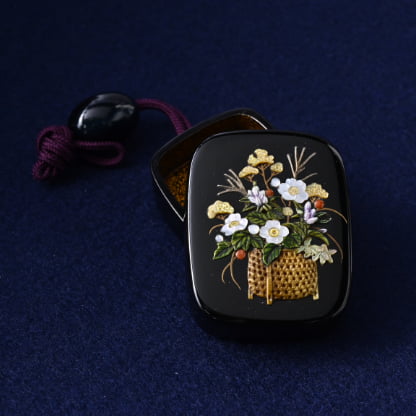 Sashi (“Stab”) NetsukeSashi netsuke are used by inserting behind the obi. The shape is thin and long, and the motifs include standing persons and animals.
Sashi (“Stab”) NetsukeSashi netsuke are used by inserting behind the obi. The shape is thin and long, and the motifs include standing persons and animals. -
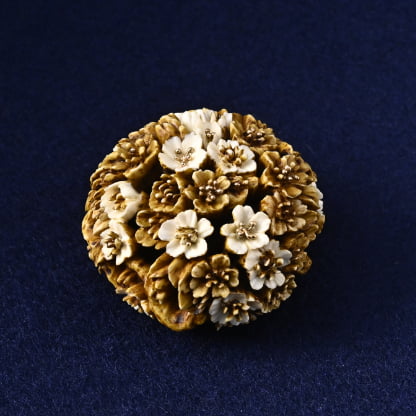 Ryusa NetsukeRyusa is the name of the inventor. It is a subtype of manju netsuke entirely carved with fine open-work.
Ryusa NetsukeRyusa is the name of the inventor. It is a subtype of manju netsuke entirely carved with fine open-work.
"Contemporary" and "Antique" Netsuke
The Kyoto Seishu Netsuke Art Museum exhibits both "contemporary" netsuke, which continue to be created both in Japan and abroad, and "antique" netsuke, the roots of contemporary netsuke.
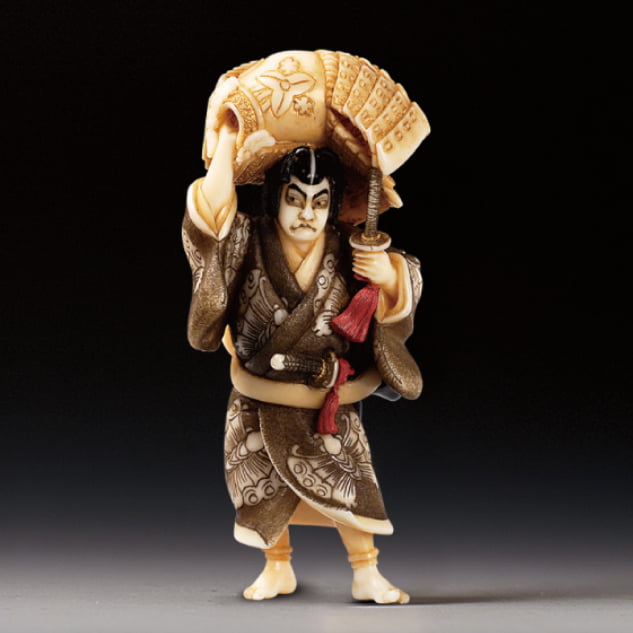
Contemporary Netsuke
Netsuke are characterized by their round shape and size, which makes them easy to put on and take off, and with their unique string holes. Contemporary netsuke artists continue to challenge new techniques while carrying on centuries of tradition. The museum exhibits contemporary netsuke works that have been created since 1945.
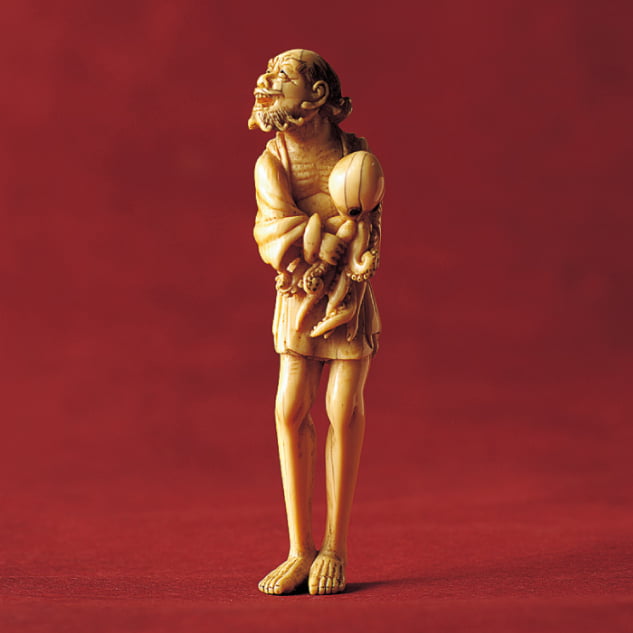
Antique Netsuke
Developed as part of the town culture in the middle of the Edo period, antique netsuke amazed Westerners who came to Japan from the end of the Edo period to the early Showa period. Antique netsuke reflect the customs and spirituality of the early modern period. Each region has its own characteristics, such as the Kyoto School's generous style and the Edo School's witty style.
Surveys and Research on Netsuke
The museum conducts surveys and research on netsuke and disseminates reports widely through the official newsletter.
The museum's curators report the results of their research on netsuke in the official quarterly newsletter. They are exploring the history of netsuke as the one of Japan's unique cultures, to define that it is an independent art form just like ukiyoe and urushi (lacquer art). In addition, cultural research related to netsuke by young researchers will be presented.

